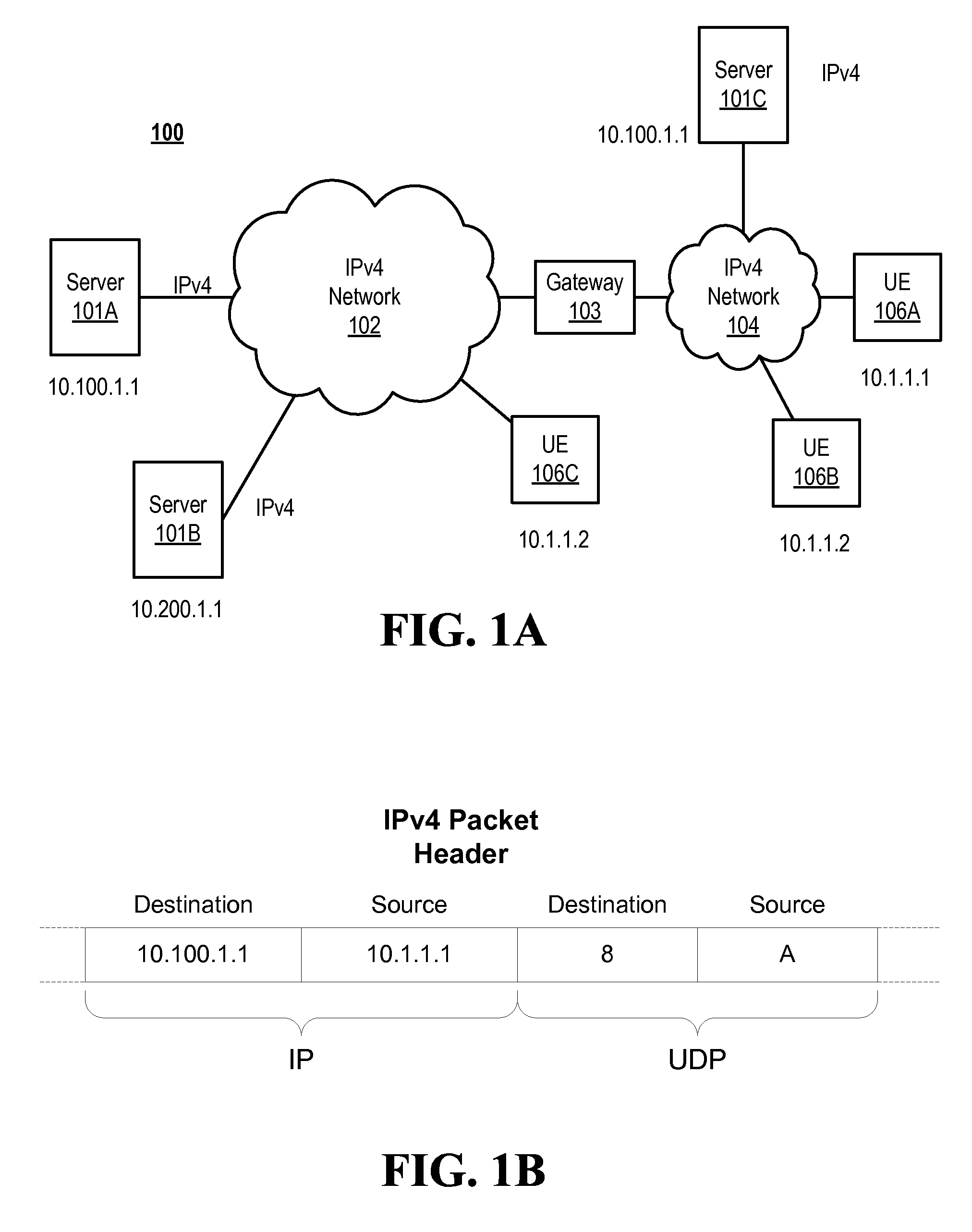Stateless Protocol Translation
a protocol and state technology, applied in the field of stateless protocol translation, can solve the problems of reducing memory speed, hardware and memory are limited in size, and the nat scheme may not scale well in large network environments
- Summary
- Abstract
- Description
- Claims
- Application Information
AI Technical Summary
Benefits of technology
Problems solved by technology
Method used
Image
Examples
Embodiment Construction
[0023]FIG. 1A illustrates an example block diagram of an IPv4 Internet Protocol global network 100. Global network 100 may include local networks 102, 104, and other local networks (not shown) interconnected through one or more communication devices such as gateway 103. Computing devices, such as servers 101A-C, user equipment 106A-C (e.g., any user device), and other devices may be communicatively connected to the local networks and may communicate data across the global network between the devices. Each device connected to the networks may have an Internet Protocol version 4 (IPv4) address assigned to it to identify data messages communicated to and from the device. A device's IPv4 address may include four numbers, each ranging from 0 to 255 (e.g. 10.1.1.1). Each device in FIG. 1A includes an IPv4 address, which is illustrated next to the device.
[0024]The data messages may be formatted into IPv4 packets which include a header, a portion of which is illustrated in FIG. 1B. The IPv4...
PUM
 Login to View More
Login to View More Abstract
Description
Claims
Application Information
 Login to View More
Login to View More - R&D
- Intellectual Property
- Life Sciences
- Materials
- Tech Scout
- Unparalleled Data Quality
- Higher Quality Content
- 60% Fewer Hallucinations
Browse by: Latest US Patents, China's latest patents, Technical Efficacy Thesaurus, Application Domain, Technology Topic, Popular Technical Reports.
© 2025 PatSnap. All rights reserved.Legal|Privacy policy|Modern Slavery Act Transparency Statement|Sitemap|About US| Contact US: help@patsnap.com



